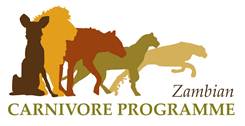Software
We will use the free software package R to analyze data and to construct simple mathematical models of population dynamics to estimate extinction risk. To conduct research in conservation biology and ecology it is now absolutely necessary to become proficient with R, which is very widely used for statistical analysis and mathematical modelling in ecology. R is installed in the MSU student computer labs but I very strongly suggest that you download it (free) from the Comprehensive R Archive Network, CRAN. We will use R within R Studio, a free interface that makes it easier to learn and use R.
Here is a quick tour of RStudio and its use.
The class will use a series of annotated examples, help sessions and homework to help you learn how the basics of R and use it to analyze ecological data and construct population models.
There will be reading assignments specific to the R software, from "A Beginner's Guide to R" by Zuur, Ieno and Meesters. You can download a free copy of this book using MSU's SpringerLink connection, as long as you are logged onto an MSU-domain computer (click the link above, the click the "Springer E-book" link, log in with your NetID and password, search the book title and click the 'download book' link to get the entire book as a pdf).
In practice, most of us learn how to do a new task in R by finding example code, puzzling out how it works, and then modifying it. The more you do this, the easier it becomes.
One of the positive aspects of working with R is that there are many excellent sources of help. Some of these are:
- The Cookbook for R website is has a nice index of example scripts, with explanations, for all basic operations like importing data, manipulating it, making graphs, etc. This is a very useful resource for new users.
- A set of cheatsheets from RStudio, organized by tasks (and a set of R packages called the tidyverse).
- DataCamp. DataCamp provide online exercises with feedback that help you learn many aspects of manipulating, plotting and analyzing data in R (and other languages).
- The Quick-R website is similar to the cookbook. I prefer the cookbook site but they are both good.
- For example code you can almot always just use google, searching for something like “r change axis range”. Just include R and the thing you are trying to accomplish and you’ll often find a good example that solves your problem, with code provided. Usually the best answer will be at stackoverflow.com (look for anwers that have been upvoted many times).
- For many types of statistical analysis, the UCLA statistical consulting department has excellent explanations with great, well-annotated example code. Click on the 'Resources' tab, and then 'Data Analysis Examples' or just click here. (There are other useful resources on the main page, like annotated code for basic statistical tests with several other software packages, which are sometimes useful even if you're ultimately going to run it in R.)

